Earth’s glacial recordMany people are aware that the Earth was repeatedly affected by ice ages over the last two million years, when ice sheets extended from the polar regions to cover ground now occupied by such major cities as Chicago, New York, Edinburgh, Birmingham, Berlin, Oslo, Stockholm and Moscow. This section illustrates the evidence we use to determine the extent of past glaciation. However, this is only a part of the story, as major ice ages occurred in the earlier geological past, as far back as 3000 million years ago. Indeed, there is a belief in some quarters that the world was almost totally covered by ice six or seven hundred million years ago - the age of the «Snowball Earth». The evidence for these earlier glaciations in the rock record is also explored. |
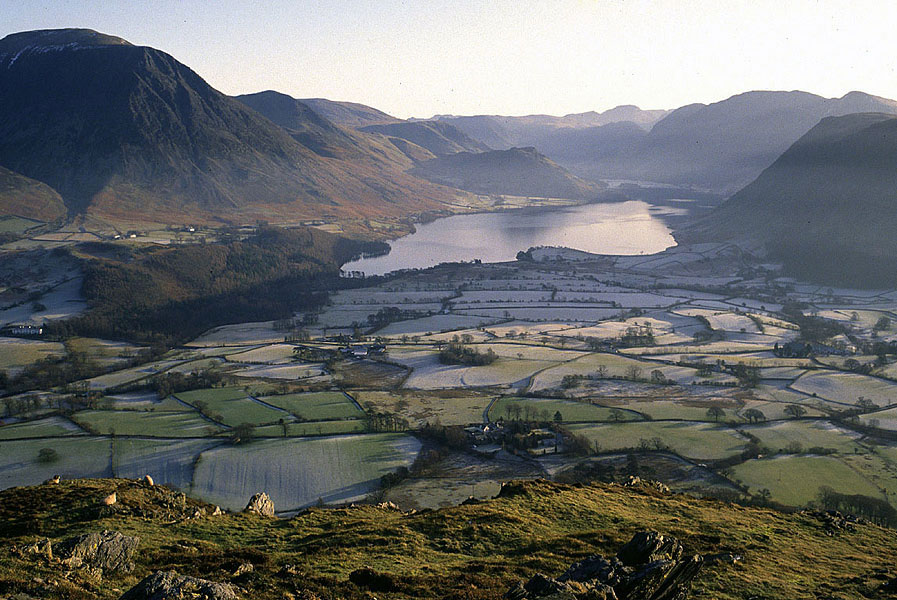 The legacy of glaciation in regions that lost their glaciers after the last glaciation 12,000 years ago, are some of the world’s finest landscapes. Crummock Water, with the Central Fells of the Lake District beyond is one of the classic glaciated areas in Britain, and one appreciated by many visitors. MH | 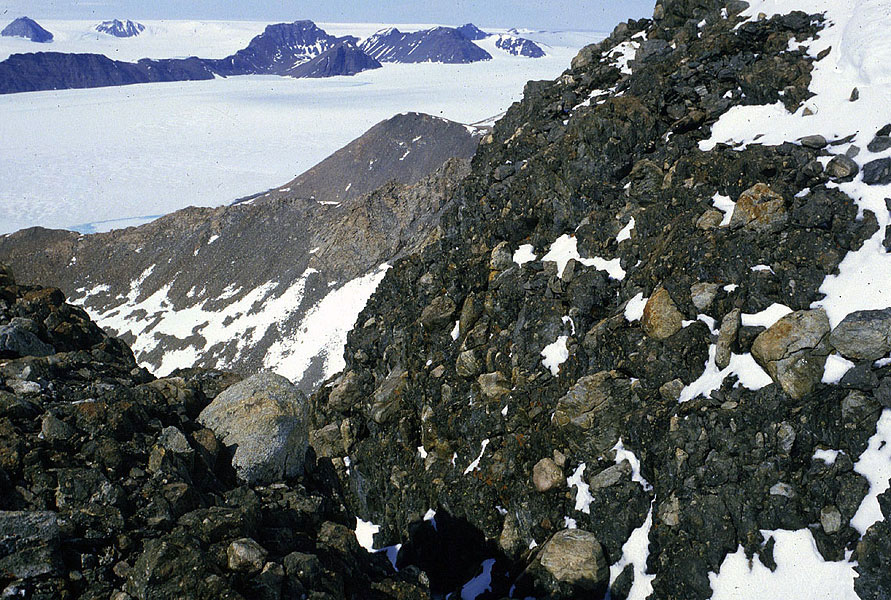 There are several lines of evidence for glaciation in ancient rocks. One of the most useful is the presence of rocks mixed with particles ranging from clay to boulder size. This example is at Tillit Nunatak in East Greenland, and is of Late Proterozoic age (about 650 m.y.old). Tillit is Danish for ‘tillite’ the name give to rocks of glacial origin. MH | 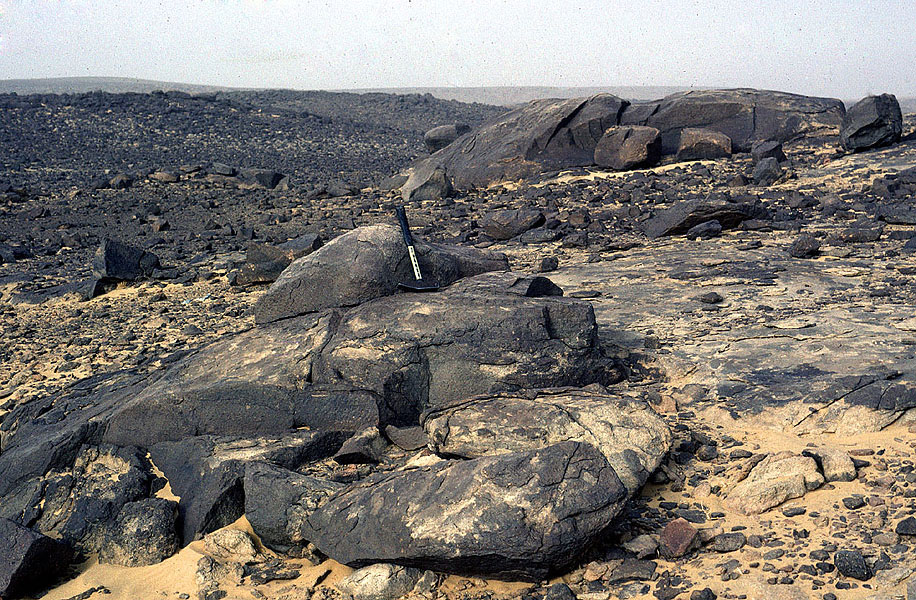 Glacial erosional landforms, such as these roches moutonnées in the Sahara desert, Mauritania, are rarely preserved in the geological record, but where found they are excellent indicators of former ice-flow directions, in this case from from left to right. These are exhumed examples dating back to Late Proterozoic time. MH | 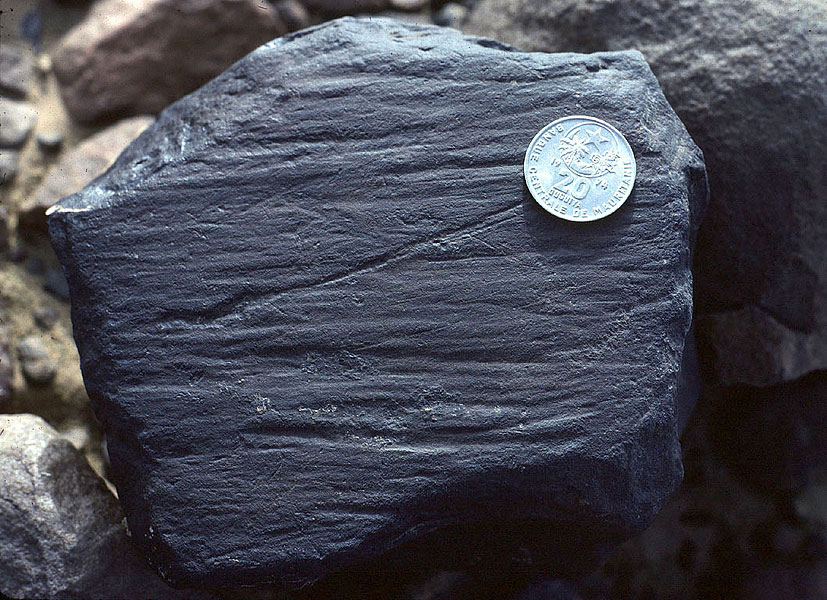 Rocks of glacial origin (tillites), if they have not been tectonically deformed, sometimes weather in such a way that the stones can be removed easily. If the stones have been glacially transported, as this example from Late Proterozoic strata in Mauritania, they may retain striations, indicating abrasion as they were transported on the underside of a sliding glacier. MH |
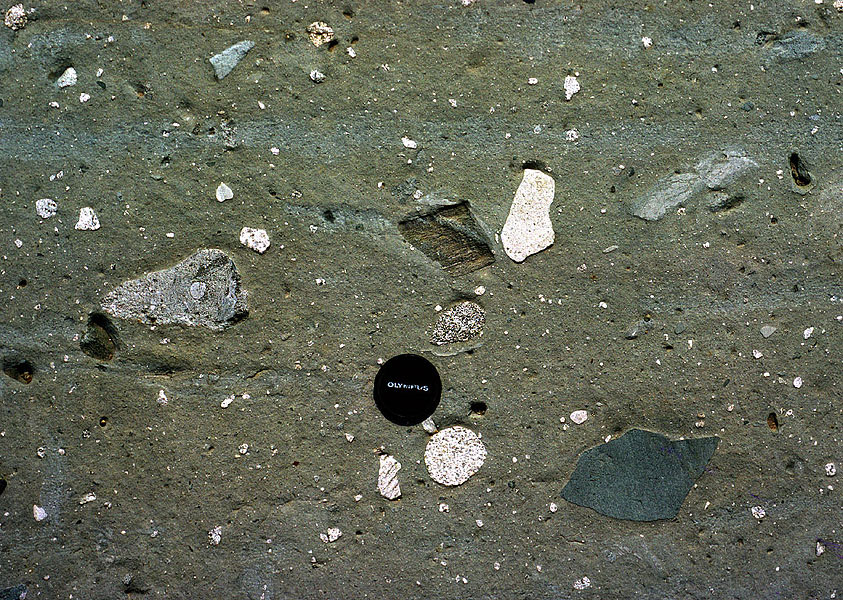 Evidence of glaciation from 2000-2500 million years ago is shown by this ‘tillite’ – a mixture of coarse and fine fragments in a very hard rock, Whitefish Falls, Ontario, Canada. MH | 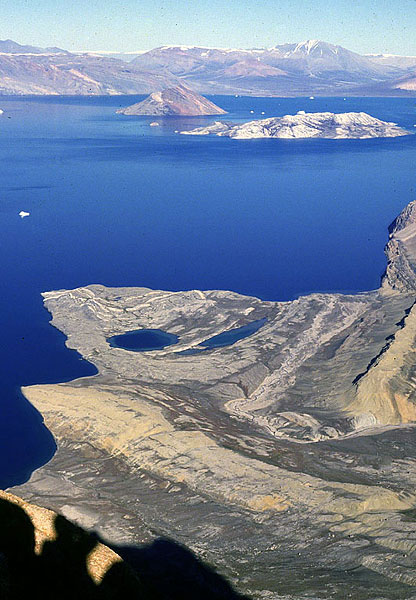 One of the advantages of examining old rocks of glacial origin is that they are commonly well exposed. On Ella Ø in central East Greenland, folding of the Late Proterozoic glacial rocks has tilted them up on end, so one can follow a stream course and work progressively up or down through several hundred metres of glacial strata. These rocks bear many of the hallmarks that have led to the generation of the ‘Snowball Earth’ hypothesis of global glaciation. MH | 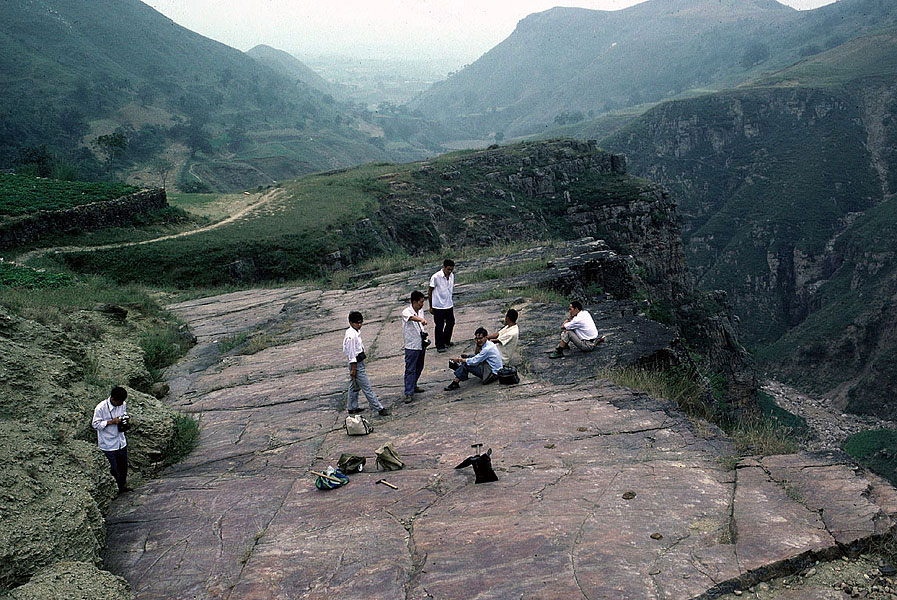 China has abundant evidence of Late Proterozoic glaciations, spanning at leats three time intervals. Not only are there are extensive tillites, but there are grooved and striated pavements underlying them, as here in Henan Province. MH | 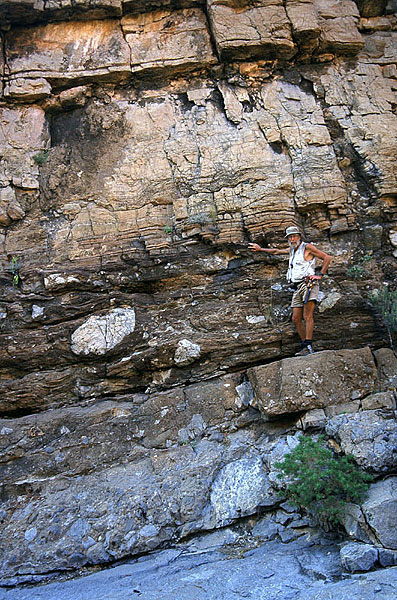 Dropstone structures are among the most telling indicators of former glaciation, in this case Late Proterozoic glaciation in Namibia. Dropstones are formed when icebergs release debris into laminated sediments of the sea or lake floor. These dropstones near Narachaamspos in the Kaokoveld have been used to promote the ‘Snowball Earth’ hypothesis as a global refrigeration event, while the overlying pink and orange carbonate rocks are indicative of the succeeding hot phase. MH |
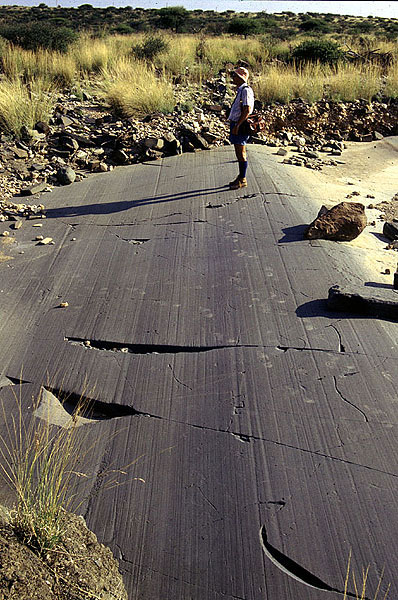 Among the best-preserved striated and grooved pavements in the world are those of Permo-Carboniferous age (around 290 m.y. ago) in South Africa. Although long-buried by younger sedimentary strata, in places, such as near Douglas in the Great Karoo region, the pavements are being exhumed, preserving features that are as fresh as the day they were formed. MH | 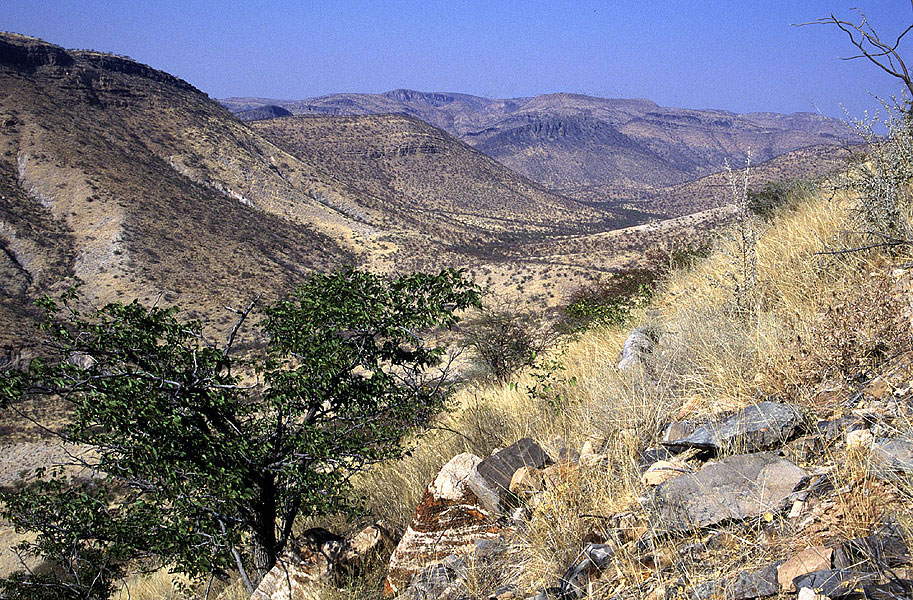 Evidence of another glaciation in the Kaokoveld, a hot desert area of northern Namibia. Here, a Permian-Carboniferous landscape has been preserved for most of its life by younger sediments. These have now been exhumed, revealing classic glacial landforms such as this glacial trough at Omutirapo. MH | 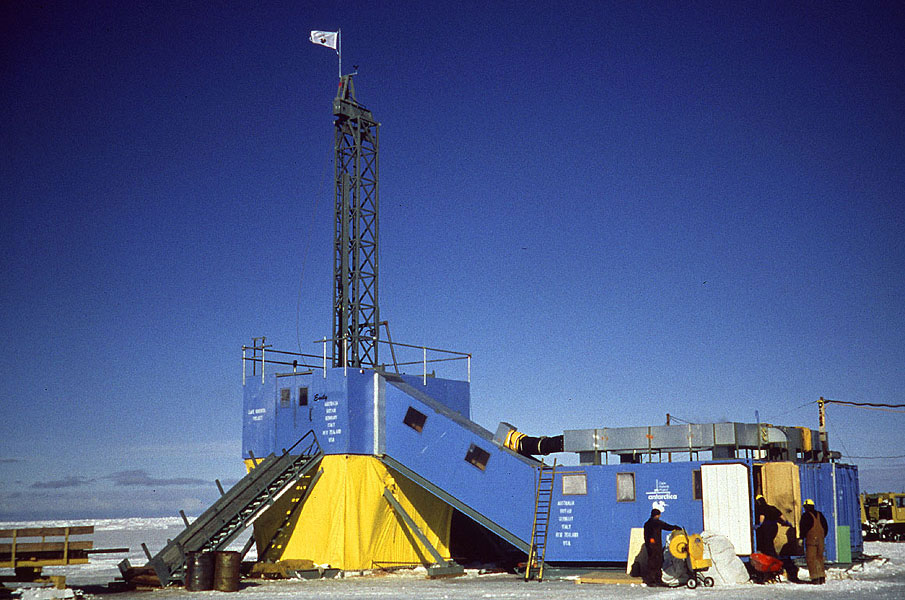 The long-term glacial record, spanning some 35 million years, has been obtained by drilling in the deep ocean from research vessels, or on the continental shelf by rigs designed for drilling on land, but placed on the winter sea ice. Here the seven-nation Cape Roberts Project is drilling into the sea ice from sea ice in the western Ross Sea. Over a kilometre of core was obtained over three seasons. (Photo Peter Barrett). | 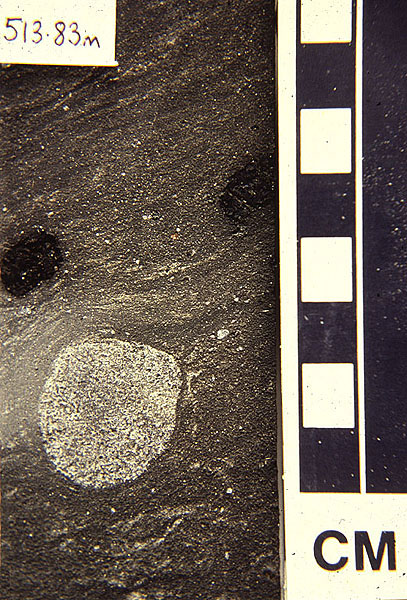 The desire to know when Cenozoic glaciation began has stimulated extensive offshore drilling in Antartica. The recovery of core has illustrated the longevity of Antarctic glaciation (35 m.y. old.), but a gradual transition from temperate to cold polar glaciation has taken place over this period, as manifested in the style of sedimentation and fossil remains. The number at top left indicates the depth below the sea floor from which the sample was obtained. MH |
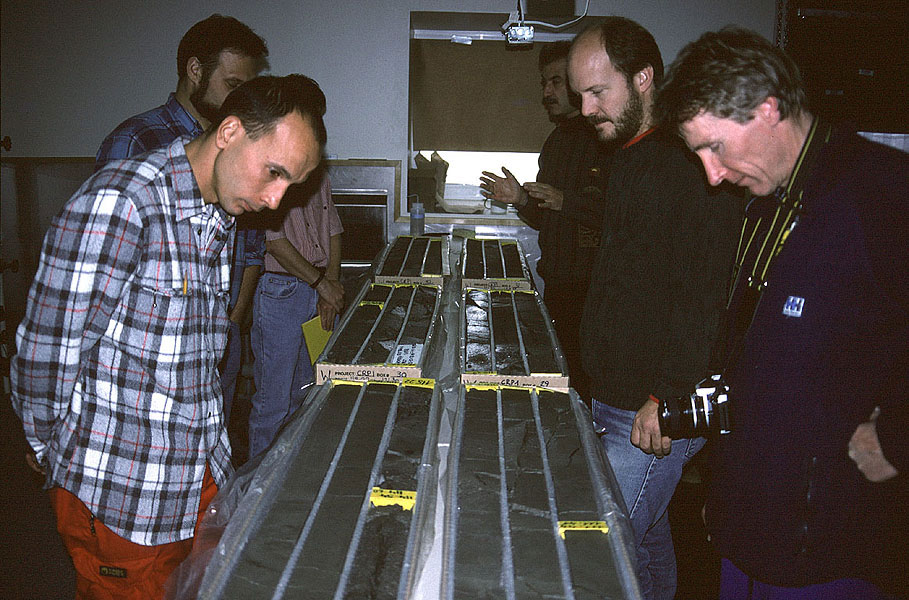 The most recent drilling programme was named the Cape Roberts Project and was a multi-million dollar operation, involving 55 scientists, that provides a series of snapshots of how the Antarctic Ice Sheet has developed since its initiation, 35 m.y. ago. Scientists are here examining the core for the first time in the laboratory at McMurdo Station. MH | 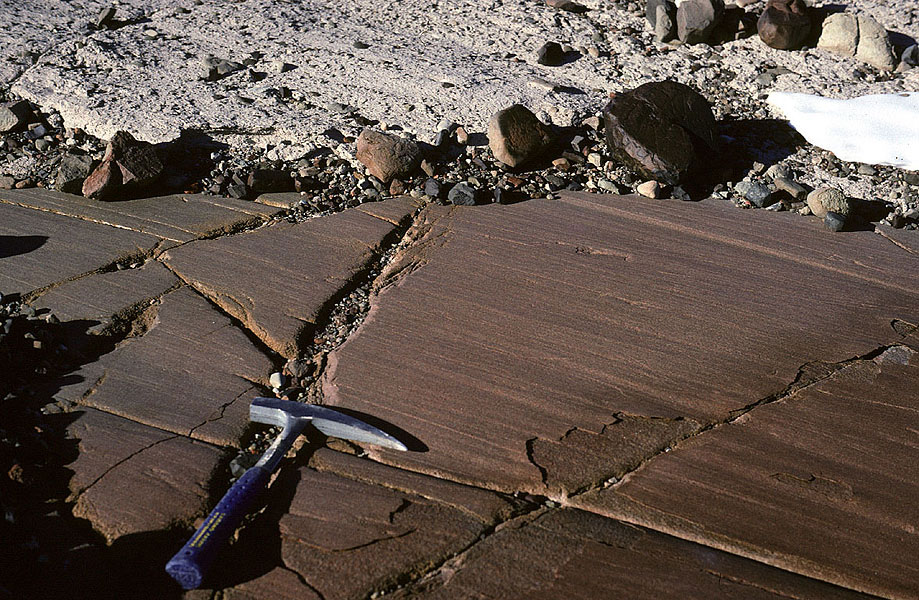 There is evidence in Antarctica of a much warmer ice sheet than the present day, coming in the form of glacial sediments known as the Sirius Group or, as here, a striated and grooved immediately beneath. This example is from Roberts Massif, Shackleton Glacier. MH | 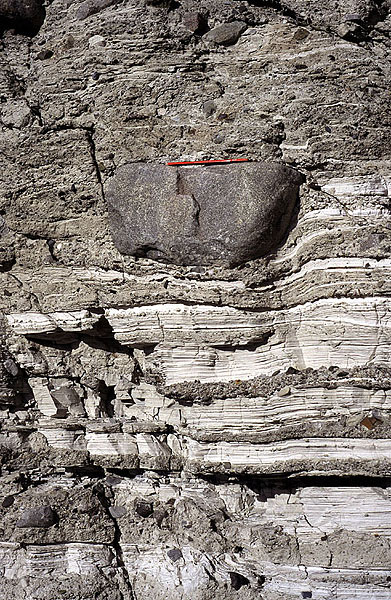 Evidence for glaciation just a few million years ago in Antarctica is preserved in these laminated deposits of the Sirius Group, Bennett Platform, Shackleton Glacier, Transantarctic Mountains. The laminated sediments contain large stones (dropstones) rafted by icebergs into a lake. MH | 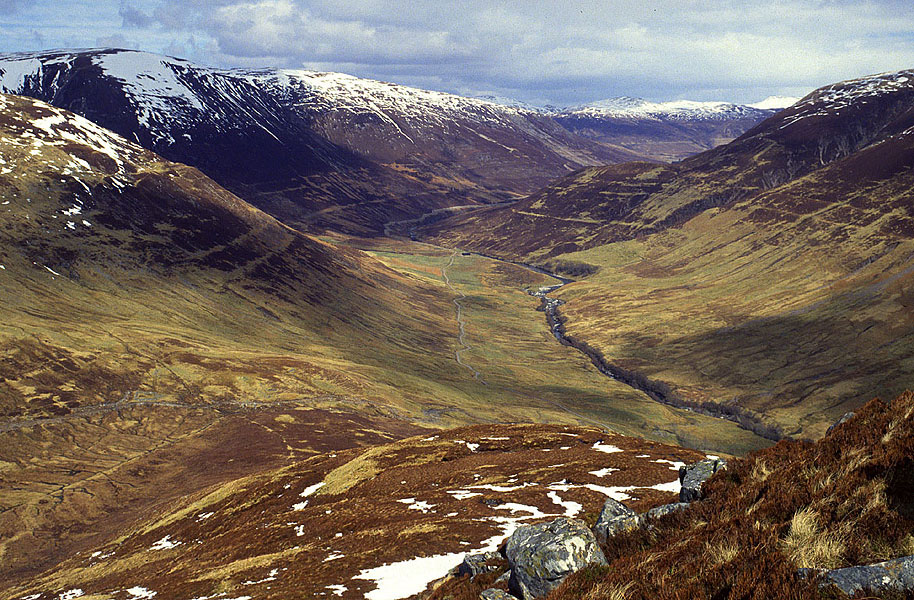 Glen Roy in the Grampian Highlands of Scotland is a famous nature reserve where the extent of past glaciation was noted in the late 19th century. Particularly significant are the three stripes across the hillsides, known as the Parallel Roads, that are notches cut by waves in a large ice-dammed lake, dating from around 12,000 years ago. MH |
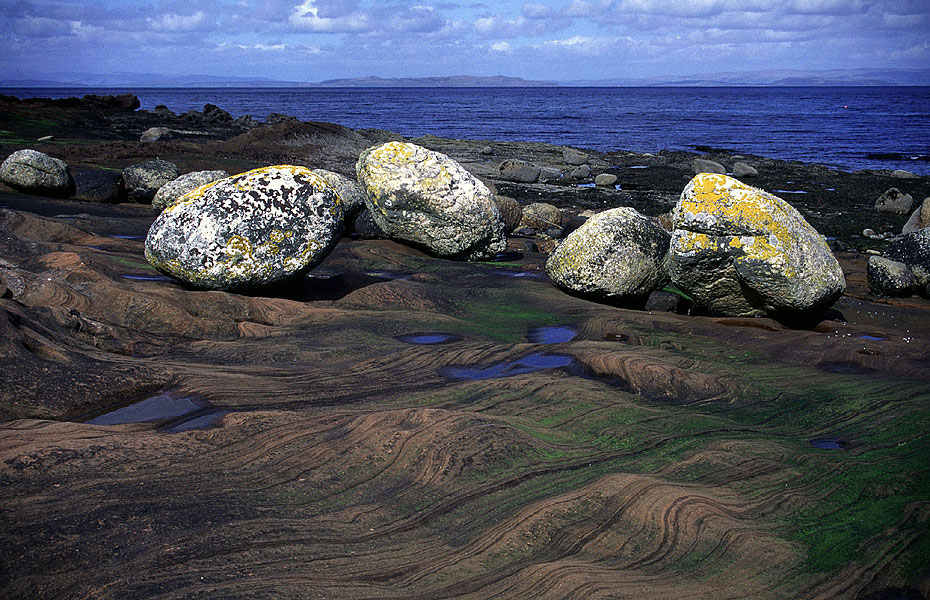 The last full-scale glaciation in Britain transported large amounts of material southwards. The Isle of Arran in SW Scotland had its own centre of ice dispersal, producing these whitish granite erratics. MH | 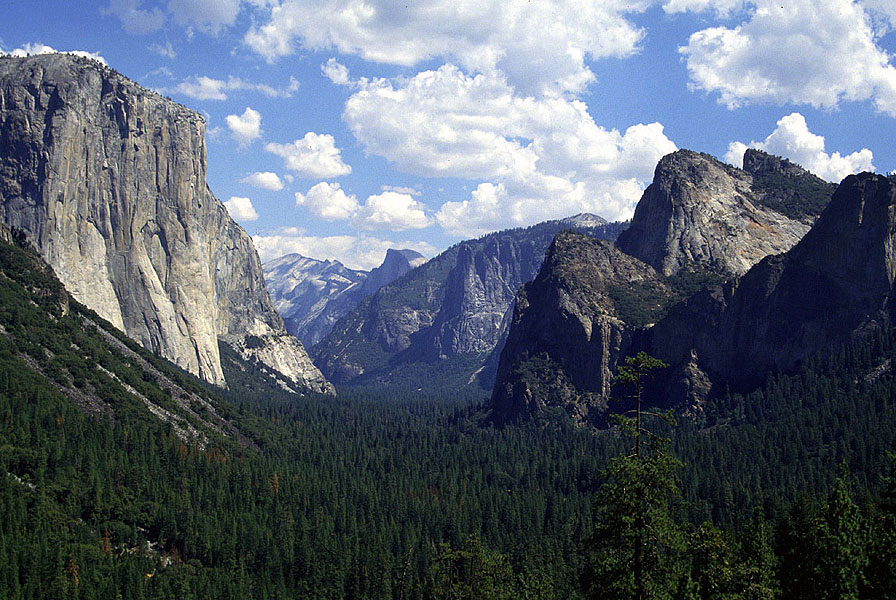 The last glaciation in the United States saw the erosion of many fine glacial troughs, such as the Yosemite Valley in California. The over-steepened valley sides include El Capitan on the left. MH |  Striking evidence of ice-sheet-scale glaciation can be found in Central Park, New York, where the exposed bedrock surfaces carry striations formed at the bed of a sliding ice mass. JA | |
| Photos: Michael Hambrey (MH), Jürg Alean (JA) |